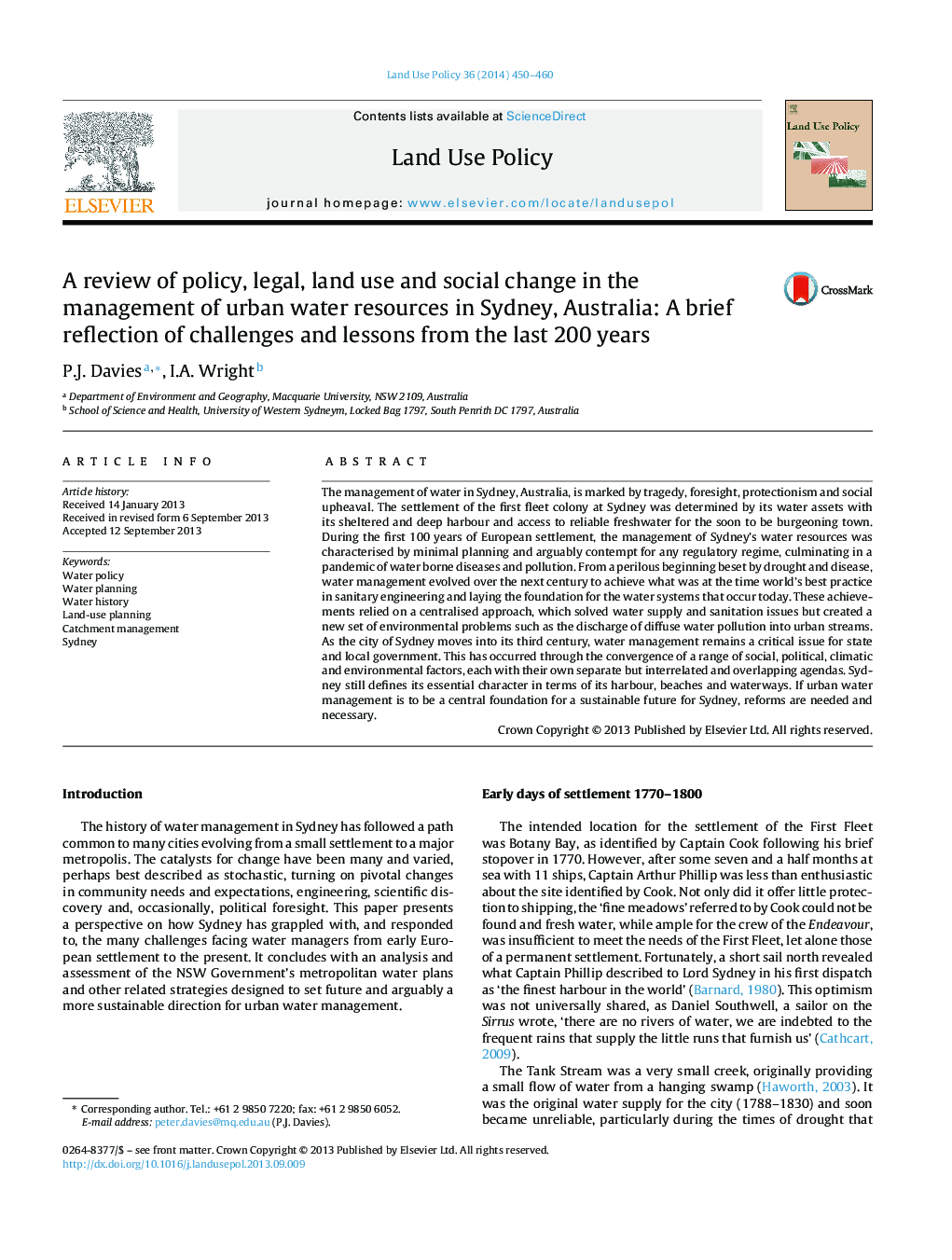| Article ID | Journal | Published Year | Pages | File Type |
|---|---|---|---|---|
| 6549012 | Land Use Policy | 2014 | 11 Pages |
Abstract
The management of water in Sydney, Australia, is marked by tragedy, foresight, protectionism and social upheaval. The settlement of the first fleet colony at Sydney was determined by its water assets with its sheltered and deep harbour and access to reliable freshwater for the soon to be burgeoning town. During the first 100 years of European settlement, the management of Sydney's water resources was characterised by minimal planning and arguably contempt for any regulatory regime, culminating in a pandemic of water borne diseases and pollution. From a perilous beginning beset by drought and disease, water management evolved over the next century to achieve what was at the time world's best practice in sanitary engineering and laying the foundation for the water systems that occur today. These achievements relied on a centralised approach, which solved water supply and sanitation issues but created a new set of environmental problems such as the discharge of diffuse water pollution into urban streams. As the city of Sydney moves into its third century, water management remains a critical issue for state and local government. This has occurred through the convergence of a range of social, political, climatic and environmental factors, each with their own separate but interrelated and overlapping agendas. Sydney still defines its essential character in terms of its harbour, beaches and waterways. If urban water management is to be a central foundation for a sustainable future for Sydney, reforms are needed and necessary.
Related Topics
Life Sciences
Agricultural and Biological Sciences
Forestry
Authors
P.J. Davies, I.A. Wright,
